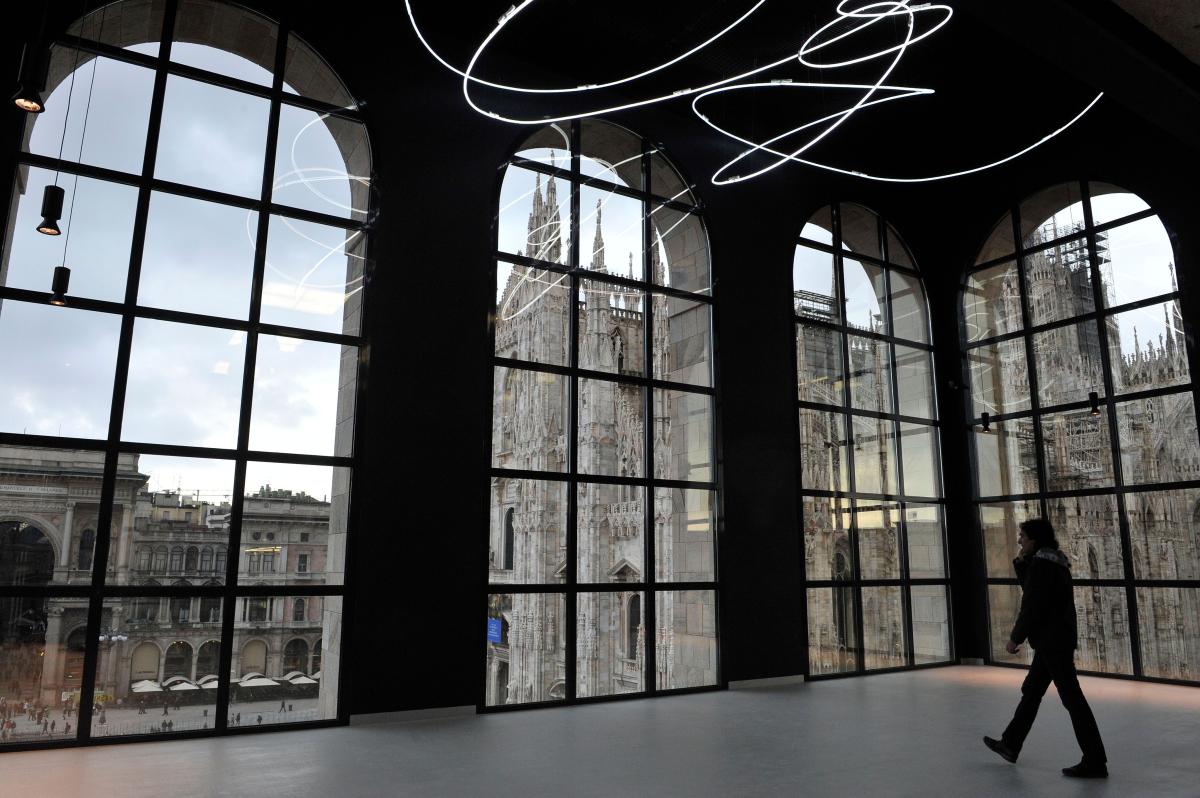

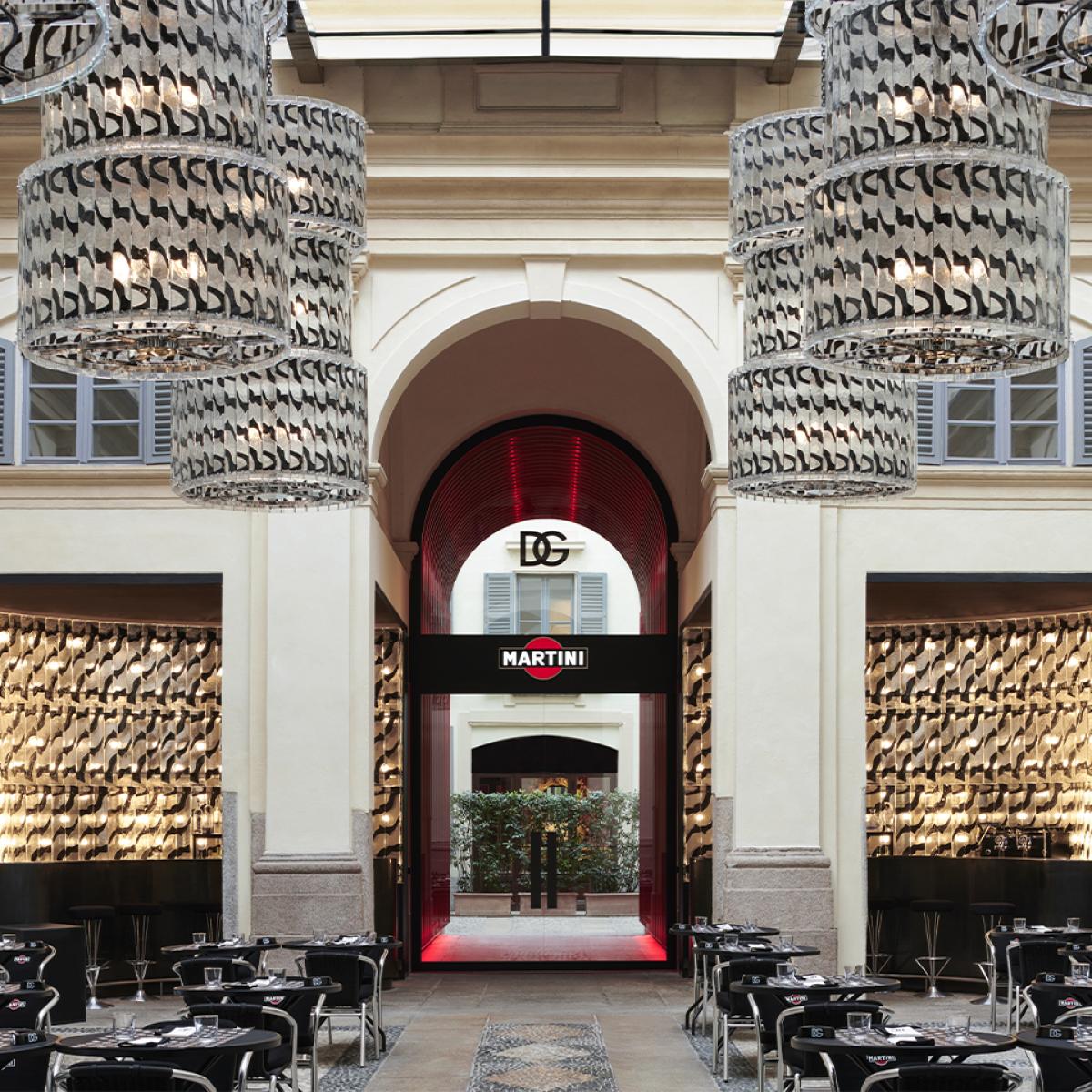
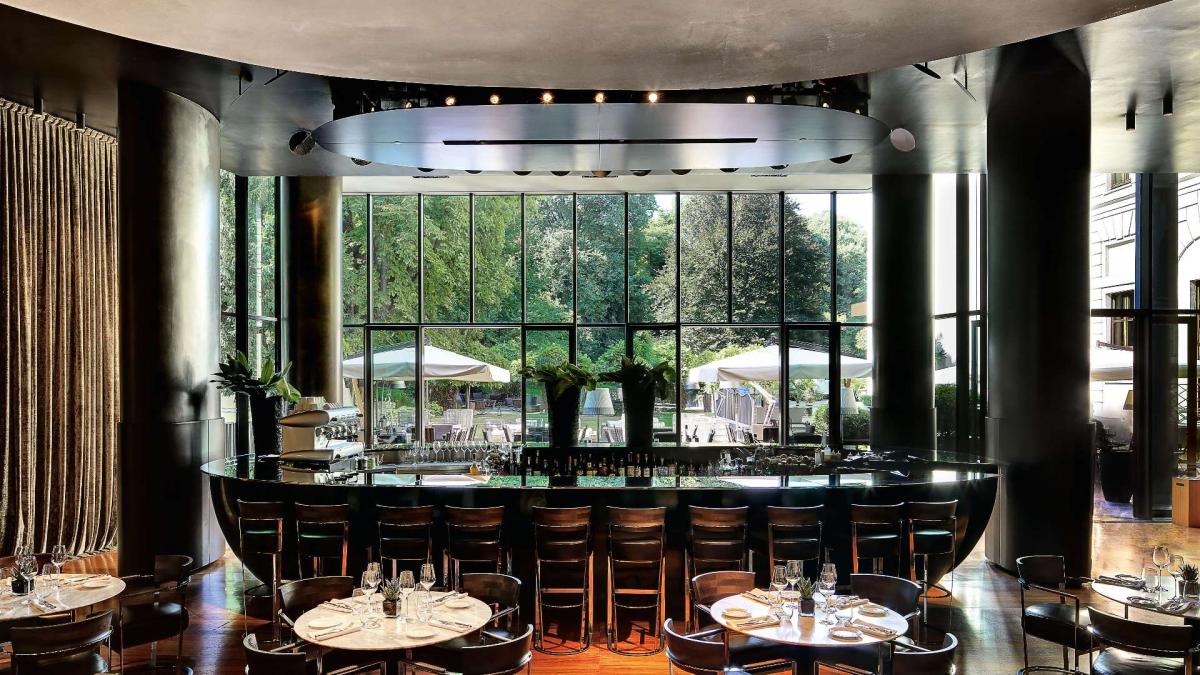
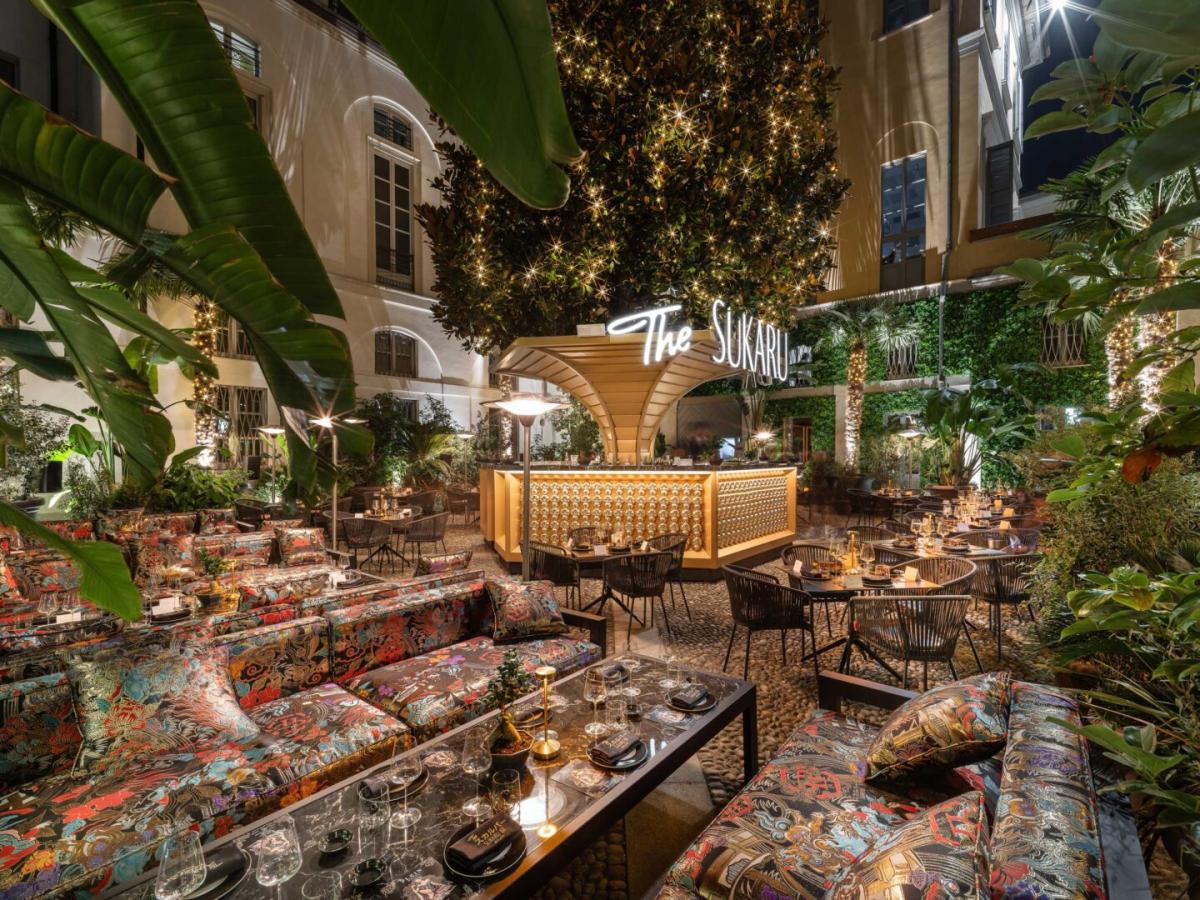
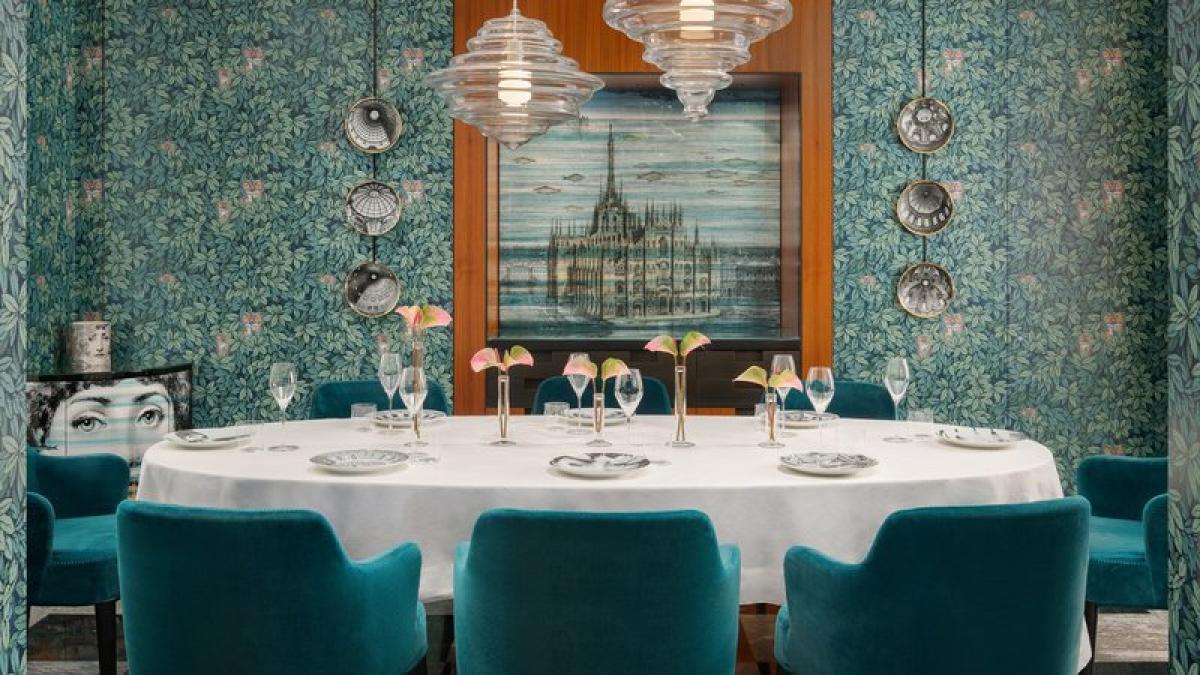
Milan is a city where, from the moment you arrive, you can sense subtle elegance and perfection in the air. The city does not reveal itself all at once; it rewards those with an eye for detail—the geometry of marble columns, the light slipping across the courtyards of Brera, the aroma of espresso drifting through the windows of a design studio. Here, creativity is never ostentatious—it pulses through everything around you: fashion, architecture, interiors, cuisine, even the way people express themselves. La dolce vita is transformed into something almost architectural: elegance built not on excess, but on precision and finesse. This is a city that teaches the art of living with taste, style, and a sense of balance.
Welcome to the world’s design capital, where style is a language and the beautiful life becomes true art.
Set within a former 15th-century convent in the heart of the Quadrilatero d’Oro, Four Seasons Hotel Milano offers a rare quietude amid the city’s fashion pulse. Vaulted ceilings, frescoed corridors, and an inner garden shaded by magnolias evoke a timeless grace.
You awaken to the soft rustle of linen, sunlight gliding across centuries-old frescoes, and the aroma of freshly brewed espresso. Breakfast unfolds in the cloistered courtyard—warm cornetti, seasonal fruit, and honey from Lombardy’s hills. The day begins with effortless refinement, where history and serenity intertwine.
• Bulgari Hotel Milano — A contemporary sanctuary tucked behind Via Privata Fratelli Gabba. Sleek interiors, a tranquil private garden once part of a monastery orchard, and mornings perfumed with white tea and quiet elegance.
• Mandarin Oriental, Milan — A minimalist ode to Milanese rationalism with an Asian sensibility. Suites open onto peaceful courtyards; marble bathrooms glow in soft dawn light. The spa, a temple of calm, is among Europe’s finest.
• Portrait Milano — A Ferragamo family gem housed in a restored 16th-century seminary on Corso Venezia. Vaulted arcades, Florentine leather, and refined modernism surround one of the city’s most elegant courtyards.
• Armani Hotel Milano — For the urban purist: every proportion, texture, and beam of light conceived by Giorgio Armani himself. Understated sophistication at its most disciplined.
• Principe di Savoia — The epitome of Milanese grandeur, from mosaic floors and crystal chandeliers to a rooftop spa with panoramic views. Classic luxury meets modern ease.
• The Plein Hotel Milano — A nocturnal symphony of glamour and provocation, set within the neoclassical grandeur of Palazzo Melzi d’Eril on Via Daniele Manin. Here, classical architecture meets the baroque theatre of Philipp Plein: mirrors and crystal chandeliers refract the glow of black-and-gold opulence, creating a stage where luxury doesn’t whisper — it dazzles. Each of the sixteen rooms is a private universe — some with saunas, others with in-room spas — all bathed in the audacious aesthetic that lives somewhere between rock ’n’ roll and haute couture.
No matter the address, mornings in Milan unfold with a sense of proportion—where design, history, and quiet beauty find their perfect balance.
Begin your morning at Seta, the Mandarin Oriental’s Michelin-starred restaurant helmed by Chef Antonio Guida. Though celebrated for its haute cuisine dinners, breakfast exemplifies quiet perfection—homemade pastries, Sicilian orange juice, and espresso robust enough to fuel Italy’s creative heart.
• Marchesi 1824 on Via Montenapoleone for a quintessential Milanese experience: pistachio croissants, cappuccino in delicate porcelain, and sunlight glinting off marble countertops.
• Cova Montenapoleone, founded in 1817, where editors, designers, and collectors converge amid vintage mirrors, linen napkins, and sophisticated conversation.
• Pasticceria Cucchi — A bohemian favorite for those who enjoy espresso with a nostalgic nod to the 1950s.
Breakfast in Milan sets the rhythm of the day: a composition that is light, tactile, and intentional.
Milan is a living design gallery—from the Renaissance to rationalism and contemporary innovation. Start at the Fondazione Prada, a golden complex where classical structures meet futuristic glass towers. Wander among installations that challenge the very concept of space.
Continue to the Museo del Novecento, with views of the Duomo, where Italian modernism unfolds through Fontana, Boccioni, and de Chirico. Then visit Casa degli Atellani, Leonardo’s vineyard-adjacent restored Renaissance home—a rare glimpse into the master’s Milan.
• Galleria Nilufar, Via della Spiga — a sanctuary of collectible design where Gio Ponti meets contemporary visionaries.
• Spazio Rossana Orlandi, in a former tie factory, where the future of design feels personal and poetic.
• ADI Design Museum, near Porta Volta — celebrating Compasso d’Oro winners who shaped Italy’s aesthetic DNA.
Each space is a chapter in the city’s design story.
Lunch in Milan is an aesthetic statement. At Il Salumaio di Montenapoleone, nestled in the courtyards of Via Santo Spirito, you encounter a quintessential Milanese scene: fashion editors, architects, and collectors gathered under lemon trees, porcelain plates glinting in natural light. The menu—vitello tonnato, fresh burrata, hand-made tagliolini—is classic Lombard cuisine executed with flawless grace.
For Michelin-starred splendor, head to Seta (Mandarin Oriental) or Enrico Bartolini at MUDEC, the city’s only three-Michelin-star restaurant. Bartolini’s cuisine is architectural in spirit—textures layered with mathematical precision, flavors balanced like light and shadow.
• Joia, by Pietro Leemann — Europe’s first Michelin-starred vegetarian restaurant, where every dish is both nourishment and meditation.
• Langosteria, near Via Savona — seafood reimagined in an elegant, contemporary setting. Linguine with red prawns is a true masterpiece.
• Nobu Milano, Armani Hotel — where Milanese design meets Japanese minimalism. Black cod with miso has become ritual, not mere dish.
Lunch here is never about abundance—it’s about a carefully curated composition. Every element, from porcelain to palette, belongs to a greater harmony characteristic of Milan.
Afternoons belong to Brera, the pulsating heart of Milanese creativity. Wander its narrow cobbled streets, where contemporary studios hide behind 18th-century facades. Visit Pinacoteca di Brera, one of Europe’s most refined art collections, and pause in the Brera Botanical Garden—an 18th-century oasis tucked behind an unassuming gate.
For architecture lovers, Fondazione Feltrinelli is a modern design icon—glass, rhythm, and light transformed into urban poetry.
If fashion is your language, the Quadrilatero d’Oro awaits—Via Montenapoleone, Via della Spiga, and Via Sant’Andrea form the sacred geometry of global style. Inside, boutiques resemble galleries—Bottega Veneta, Prada, Valentino, Dior—each a lesson in architectural interiors reflecting brand philosophy.
• 10 Corso Como — a Milanese institution blending art, design, and fashion.
• Modes Milano — curated minimalism for the stylish intellect.
• Antonioli — where fashion meets avant-garde architecture.
Milanese afternoons call for a sweet interlude. Return to Pasticceria Marchesi 1824 for afternoon espresso and a slice of pear-chocolate cake, or try Pasticceria Cova, where the air carries notes of coffee and cologne.
For something modern—Pavé in Porta Venezia offers artisanal pastries in a space reminiscent of a design studio: soft lighting, marble counters, and the gentle hum of creative conversation.
No city perfects the aperitivo like Milan. It is not merely a drink—it is a ritual, a prelude to evening elegance.
Start at Camparino in Galleria, overlooking the Duomo. Open since 1915, it remains the purest expression of this Milanese ritual. Order a Negroni or Campari Spritz and watch the light fade through the glass arcade.
• Bar Martini by Dolce & Gabbana — where fashion meets mixology on glossy black marble.
• Armani/Bamboo Bar, Via Manzoni — minimalist city views, cocktails designed with geometric precision.
• Ceresio 7 by Dsquared2 — rooftop pool, bronze interiors, and sunsets that become a prelude to a perfect evening.
Dinner in Milan is the moment when the city’s two obsessions—design and gastronomy—merge.
At Enrico Bartolini at MUDEC, each dish feels like an architectural masterpiece. The dining room—minimalist and luminous—reflects Bartolini’s philosophy: Italian tradition deconstructed and rebuilt through precision and imagination.
Seta at Mandarin Oriental offers Antonio Guida’s elegant modernity—Mediterranean inspiration executed with high finesse.
• Il Luogo di Aimo e Nadia — two Michelin stars, over fifty years of culinary artistry—a true Milanese legacy.
• Joia — refined vegetarian cuisine.
• Nobu Milano — global sophistication with Milanese flair, gathering the city’s creative elite between fashion shows.
• Da Giacomo Bistrot, Via Sottocorno — Art Deco charm, impeccable service, and one of the city’s most elegant dining spaces.
• The Plein Hotel Milano unfolds a vibrant culinary journey—from the Japanese-inspired artistry of Sukaru Ba to the plant-based indulgence of La Jungle de Plein, each venue dances to its own rhythm of flavour and style. To all this we add The Crystal Beach, located on the rooftop terrace - there you can enjoy exquisite cocktails and beautiful sunsets with a glass of champagne in hand.
When city lights reflect off stone and glass, Milanese nocturnal artistry begins. At the Bulgari Hotel Bar, mixology is a sacred ritual—precision, soft lighting, and whispers of refined conversation. Try their signature saffron Negroni while jazz hums gently in the background.
• Terrazza Gallia — cocktails with skyline views under the Pirelli Tower’s glow.
• Nottingham Forest — globally ranked cocktail bar.
• Armani/Bamboo Bar — pure geometry, elegance, and glass.
• Handcrafted Murano glass vase from Nilufar Gallery or Venini.
• Limited-edition art or design book from 10 Corso Como.
• Custom or niche perfume from Amouage, Maison Francis Kurkdjian, or Roja Parfums—luxury scents as unique as the city itself.
• Bespoke accessory from Armani Privé or Ferragamo.
• Chocolate sculpture from Marchesi 1824, because even Milanese pastries are works of art.
In Milan, beauty does not shout—it breathes quietly in the harmony between stone and glass, history and innovation, silence and sound. Here, design is not a discipline - it is a way of life. Spending a day in this city means understanding that sophistication is measured not only by perfection, but by proportion: the right line, the perfect light, the balance in every gesture. And when night wraps the streets in its soft glow, one thing remains: in Milan, style is not what you wear—it is how you live, with finesse and elegance.
Photos: bulgarihotels.com, mandarinoriental.com, lungarnocollection.com, armanihotels.com, fourseasons.com, Mattia Iotti.